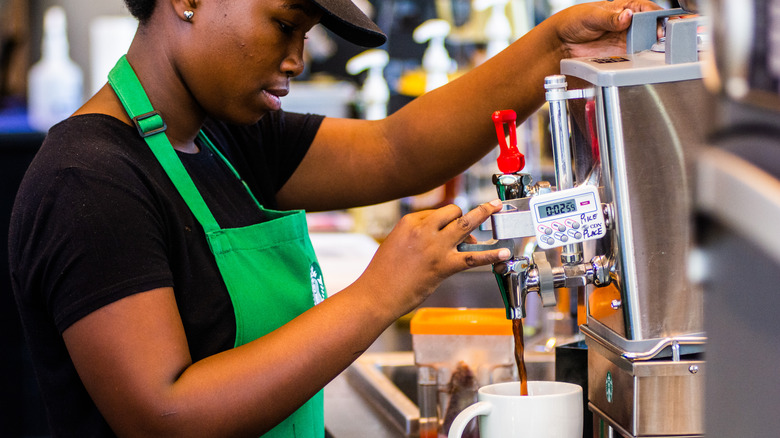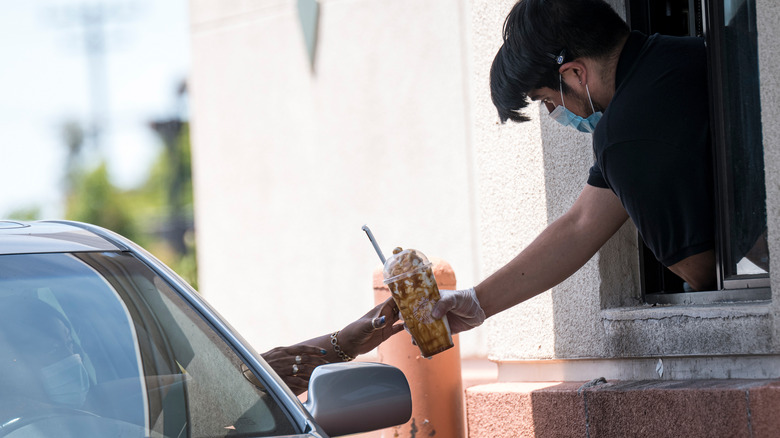Why 'Pay It Forward' Lines Might Not Be As Popular As You Think
Everyone loves the pay-if-for-forward lines, right? It's a random act of kindness that sometimes blossoms into a wholesome meadow, such as the time in 2014 when CNN reported on a chain of over 750 Starbucks customers paying it forward. For those out of the loop, Fansided's Smart Carting describes the pay it forward scheme as one person giving an additional $5 so that the following customer can benefit. The cashier tells the next customer who has a choice of using the $5 as part of their payment or leaving it for the next customer and so on.
However, the headline probably tipped you off to the fact that not everyone loves the lines. Specifically, some baristas and former baristas at Starbucks have made complaints about the system.
On September 11, 2021, The Mirror reported that a former barista called Hannah Wilson had taken to Facebook to explain how "Pay it forward is extremely annoying and makes everything confusing. It makes it easy to hand out the wrong drinks and just sucks." Nine months before this, another barista complained on the Starbucks subreddit that they had served a chain of twenty people who all paid it forward without tipping the workers. So, they're happy to spend the money on a drink for someone who presumably had the money to pay for it, but not to give some to those making the drinks.
What pay it forward really does
Starbucks' pay it forward gimmick does two things. First, it brings the company easy publicity because people like a feel good story about a community's selflessness. Second, it makes people feel charitable at a Starbucks which might influence them to come back.
However, the pay it forward phenomenon doesn't really work in the charitable way most envisage it. In fact, Fast Company's Jason Feifer got so annoyed with the misunderstanding and the enmity directed towards those who broke the chain that he sat down to write a thorough explanation. The point is that after the first person has paid it forward, every following customer has the decision to accept the first person's $5 or to leave the money untouched and pay for their own drink. For most customers, paying it forward is simply engaging in a normal economic transaction of purchasing something with your money. For most workers, it appears that this self-congratulatory exercise simply results in added work.

